Billy Mitchell, pioneering American aviator and proponent of an independent air force, had scored a major PR victory when he sunk the former German battleship Ostfriesland, which he had convinced the public that the Navy believed was impossible. Unfortunately, his grandstanding tactics had made him enemies in Washington, and the new head of the Air Service, Mason Patrick, was appointed with a specific remit to keep Mitchell in line. Mitchell was informed that any public statements would have to be specifically approved by Patrick, and for the next two years, he mostly kept his head down.
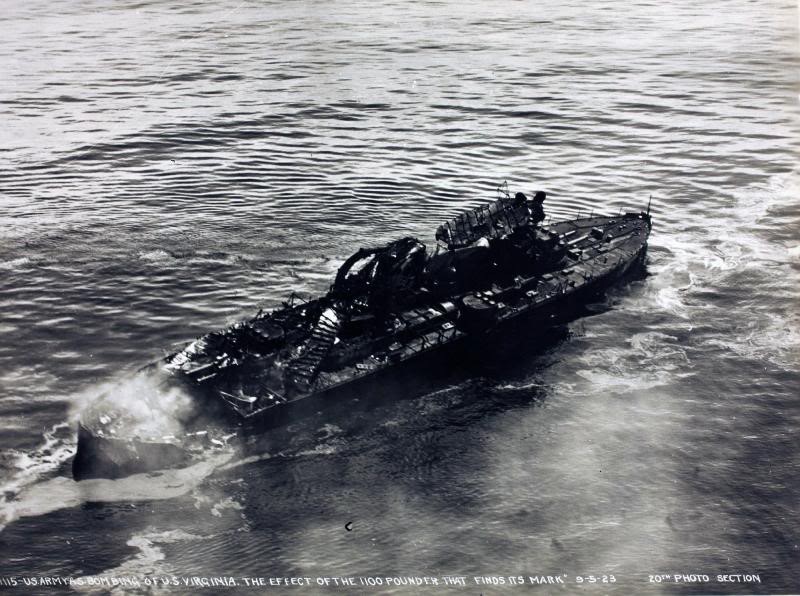
Virginia under air attack
In September 1923, the Army Air Service received two more pre-dreadnoughts, New Jersey and Virginia, for use during bombing tests. Despite Michell's insistence that he be delivered the "sturdiest ships to be scrapped with steam up and magazines filled", they were in much the same shape Ostfriesland and Alabama had been, stripped out and with minimal watertight integrity. Both were swiftly sunk, although the Navy managed to convince Pershing to emphasize the obsolete nature of the targets during his statements to the press. Mitchell was furious, but held his tongue and avoided leaking his report to the press. Later that year, Mitchell married again, and he and his new wife headed to the Far East on an inspection tour that lasted more than 7 months.
Things began to unravel when he returned. President Coolidge was not a fan of the battleship, and he requested a board be appointed to look into the future of naval aviation. This board, known as the Eberle Board after its chairman, took testimony from many officers, including an uncharacteristically thoughtful Mitchell, who had apparently been convinced by his time in the Far East that war with Japan was inevitable and that battleships would be needed to fight it. But any hopes that Mitchell had turned over a new leaf were dashed weeks later by a series of inflammatory articles appearing in the Saturday Evening Post. Mitchell had gone straight to the President, who was a major supporter of aviation, for permission to publish them, and Coolidge had said that he had no objection so long as Patrick approved. Mitchell then went to Patrick, who approved under the belief that Coolidge had given unconditional approval for them, a tactic familiar to any parent.
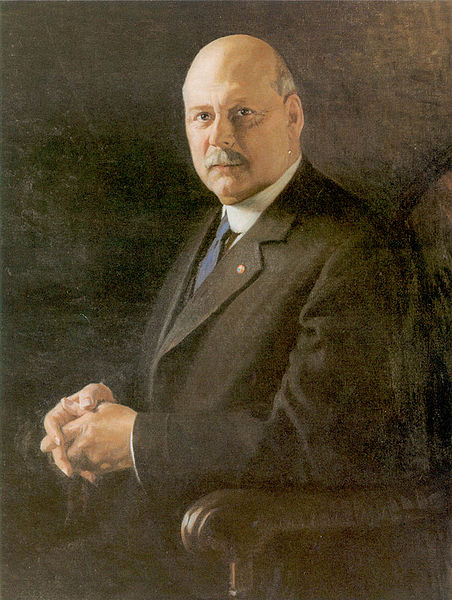
John Weeks, Secretary of War
Worse was to come, as Congress appointed another Committee, chaired by Florian Lampert, with a broad remit to investigate the state of American airpower. Mitchell was the most frequent witness, appearing five times and giving his usual criticisms of the Navy and the higher-ups in the Army, going so far as to claim that many other witnesses before the committee had lied. Secretary of War Weeks demanded that Michell substantiate his claims, and there was general dissatisfaction from all but his staunchest partisans with his response. His aggressiveness saw the first cracks in his public support, as many newspapers that had previously championed his cause began to believe he'd gone too far. His grandiosity had finally gotten the better of him, and Weeks decided not to reappoint him as Assistant Chief of the Air Service, despite efforts by Congressional supporters to secure his reappointment. Mitchell would revert to his permanent rank of Colonel, and was rapidly posted to XIII Corps headquarters in San Antonio, well away from the limelight. The transfer took effect in April 1925.
The fall of that year saw Mitchell back in the public eye, as he announced plans to publish a book based on his Saturday Evening Post articles titled Winged Victory, promising to expose the truth about the state of American military aviation. He had neglected to get clearance on the grounds that most of the material had been previously published, which particularly infuriated Weeks. To make matters worse, the publisher, possibly without Mitchell's knowledge, had illustrated the inside covers with newspaper cartoons making fun of the Secretary of War.
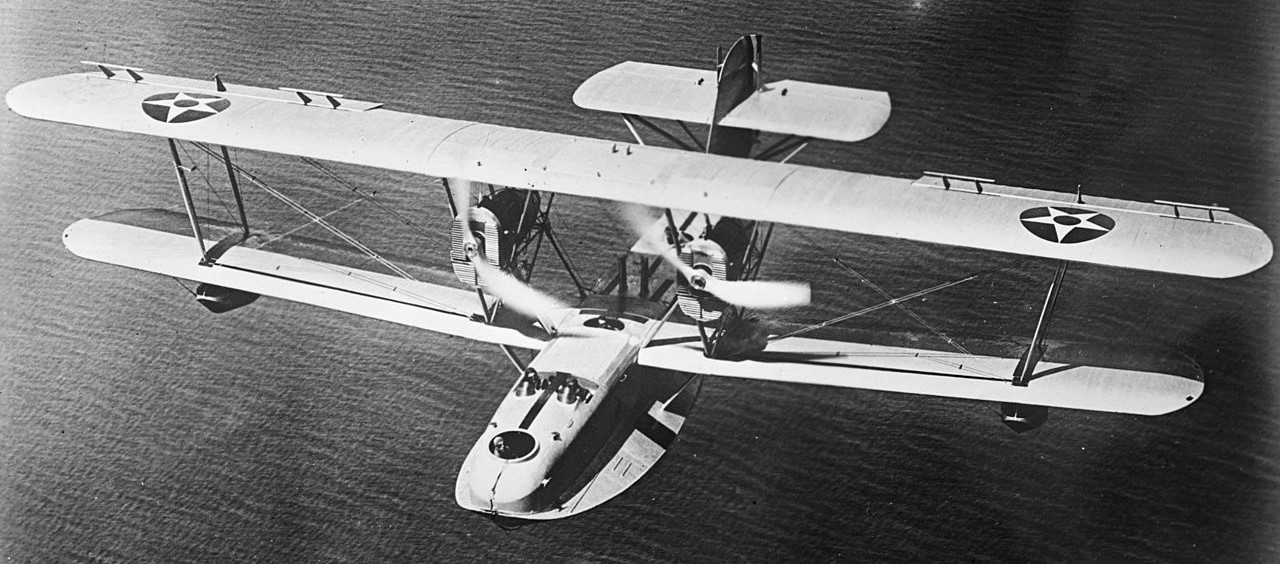
A PN-9 flying boat similar to the one Rodgers used
That fall also saw a pair of failures on the part of naval aviation that ultimately would provide Mitchell the rope to hang himself. The first was an attempt by pioneering naval aviator John Rodgers to fly from the US mainland to Hawaii that ended when his plane ran out of fuel and had to land in the Pacific. Despite the best efforts of the Navy, he and his crew weren't found for 9 days, by which time they'd managed to sail the plane 450 miles and were within sight of the island of Kauai. Two days later, the Navy's first rigid airship, Shenandoah, broke up in a storm over Ohio, killing its captain, who had protested the orders to fly in such a storm-prone region.

The wreckage of Shenandoah
The next morning, Mitchell issued a statement to the press, restating his claims of the need for a separate air service and charging that the accident was the result of fliers having to take orders from non-fliers. The capstone quote, "These accidents are the direct result of the incompetency, criminal negligence, and almost treasonable administration of the national defense by the navy and war departments" was the final straw. Admiral William Moffett, head of the Bureau of Aeronautics, responded that "The most charitable way to regard these charges is that their author is of unsound mind and suffering from delusions of grandeur." Moffett's statement summed up the general response to Mitchell on this issue, while Secretary of War Dwight Davis1 ordered Mitchell be court-martialed for insubordination.
Mitchell was swiftly relieved of duty and sent to Washington, ostensibly to testify before the Morrow Board, a committee that Coolidge had set up as a counter to Lampert's congressional investigation. He was welcomed as a hero by his supporters, but Morrow was smart enough to merely let him talk himself out. Instead of his usual electrifying performance before Congress, aided by sympathetic Congressmen, Mitchell found himself facing a group intent on actually solving the problem and uninterested in letting him grandstand. Once he was done testifying, he was summoned and charged with violation of the ninety-sixth article of war.2 A court-martial was empaneled, although Mitchell and his supporters waged a vigorous PR campaign to get him off. Davis attempted to downplay the importance of the trial, scheduling it in a dilapidated courtroom and attempting to limit the number of spectators. He was unsuccessful, and the media circus around the trial dominated the headlines.
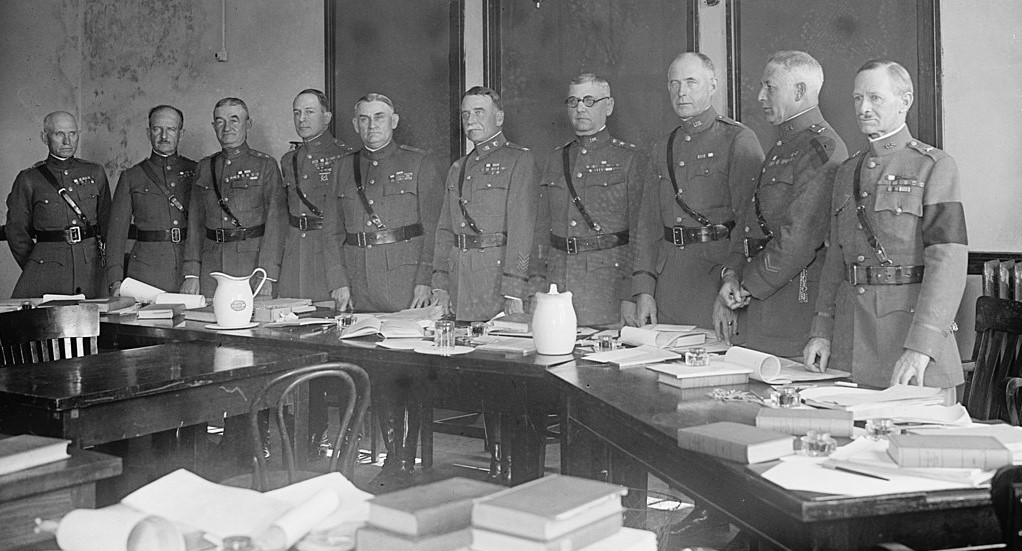
The members of Mitchell's Court Martial
Three of the 13 officers, mostly major generals, on the Court Martial, were removed by the defense for bias. The remaining ones, including Douglas MacArthur, were seen as likely to favor Mitchell on the whole, but they rejected his initial attempt to escape their jurisdiction on the grounds of freedom of speech. It was trivial to prove that Mitchell had made the offending statements, and while his defense counsel's attempt to turn the trial into a matter of his factual claims dragged it out to seven weeks, the guilty verdict was unanimous. It was recommended that Mitchell be suspended of duty for five years, which would allow him to retire with a pension. Unfortunately, even after President Coolidge intervened to grant him half pay, it would have been financially ruinous for Mitchell, and he instead resigned from the Army, planning to carry on the crusade for air power from outside.
Unfortunately, his sources of information dried up in retirement, and without new material he found it impossible to stay in the public eye. The debate over airpower was starting to cool, aided by the Morrow Board's report, released two weeks before the verdict. It recommended against the creation of a separate air force, or the unification of the services under a Department of Defense, but did propose the creation of assistant secretaries in the War and Navy departments for aviation. These recommendations were ultimately adopted by Congress in mid-1926, despite the efforts of a group of Air Service officers and their Congressional allies to gain independence. The bill also turned the Army Air Service into the Army Air Corps, an organization intended to bear a similar relationship to the Army that the Marine Corps did to the Navy.3 There things would rest until 1947, when the Air Force finally gained full independence. Mitchell spent the last decade of his life continuing to crusade for airpower, although in increasing obscurity, and even when he died in 1936, he continued to believe that he was the one who had single-handedly given birth to American military aviation.
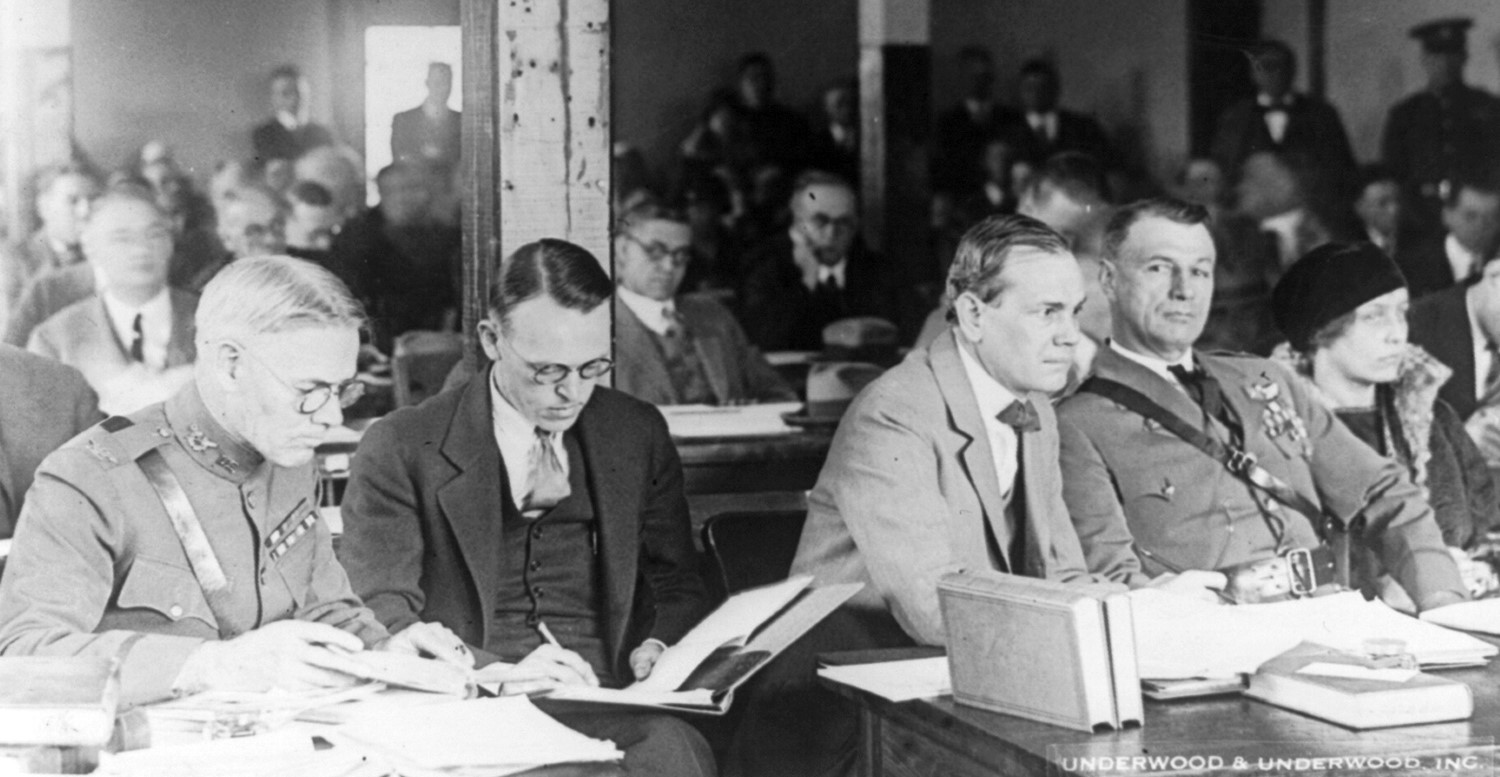
Mitchell (right) at his Court Martial
While Mitchell is today hailed as a visionary by many, his actual contribution to the history of American airpower is far more complex. He deserves credit as an early advocate of military aviation, but such praise must be balanced against his egotism and disregard for the truth in making his case. His claims of the efficacy of level bombing against maneuvering ships were entirely false, as proved at Midway, when Army B-17s scored only one hit and two near misses on the Japanese fleet despite dropping 314 bombs.4 This didn't stop them from grabbing most of the credit for the victory, an injustice only corrected after the war. In many ways, Mitchell reminds me of Jackie Fisher. Both men made predictions that were ultimately borne out, although they took far longer to come true than either man believed. Fisher was was certainly no stranger to grandiosity, although he was also the architect of the fleet that won the First World War at sea and anticipated most of the naval developments of the rest of the 20th century. Mitchell's legacy, on the other hand, was a massive brawl over the nature of airpower in the 20s and some failed predictions about what would render the battleship obsolete, which sadly overshadowed his excellent work as America's first combat aviation commander. Ultimately, that would be the nuclear weapon, an invention that would also spark the second great interservice war.5
1 Weeks had suffered a stroke in April. ⇑
3 The Marine Corps has grown in prestige and organizational independence from the Navy over the last three-quarters of a century. The Commandant didn't serve on the Joint Chiefs of Staff until the mid-50s, and wasn't made a full member until around 1980. ⇑
4 They initially claimed 22 direct hits, 6 probables and 46 near-misses. ⇑
5 A final note: Mitchell was never awarded the Medal of Honor. In 1946, he was posthumously voted a Congressional Gold Medal for his services, and due to some spectacularly poor writing on the part of the law's drafters, it's often confused with the Medal of Honor. But it's not one. ⇑

Comments
So in my mind the real theorycrafting exercise is what happens if Billy Mitchell never existed (or never came back from France) a la It's a Wonderful Life? Do more effective promoters of airpower take his place, or do aviation detractors have an easier time controlling the narrative?
Hmmm.... A good question. Aviation wouldn't lack for promoters in this timeline (just take a look at senior AAF leadership during WWII) but I don't think there was anyone else with Mitchell's combination of grandiosity and PR acumen. I'd guess that things get settled somewhat more amicably.
I don't think the progress of aviation gets slowed down that much if Mitchell is out of the picture. When the question of aircraft carriers was put to the General Board in (IIRC) 1919, after reviewing all the available information they recommended the Navy acquire one carrier per BB division. Congress didn't end up funding that, of course, but it's a good indicator of how seriously even the crusty old admirals were taking the potential of aviation in general and naval aviation in particular.
Also, it's not like there was a war in 1924 to demand immediate action - by 1939, it was clear that air forces were the real deal, and the US was going to have a big one. Mitchell had basically nothing to do with that. Also, other nations had serious air forces (the RAF was a separate branch before the end of WW1), and while the US was insular, it wasn't blind.
I can't see much he accomplished, tbh.
Was Mitchell particularly attached to level bombing? The British had operational experience with both torpedo bombing and dive bombing during the first world war. Presumably the Americans would have looked into these techniques too. Why not during these exercises? Were the aircraft available only suitable for level bombing?
He was. Dive bombing wouldn't be invented for another decade or so, and required much lighter aircraft, anyway. Attempts to do it with heavy bombers ended badly. He didn't like torpeodes because he saw the whole thing as a game of explosive weights, and bombs are a lot more efficient than torpedoes by that metric. (I promise I am not making this up.) The Navy did torpedo tests, but I'm not sure how much of that was ship-launched torpedoes being in the picture.
I'm sure I've read about the RNAS dive bombing Zeppelin bases, thought that might be bombing from a dive, rather than 'dive bombing' per se. If you were exclusively planning on attacking targets that neither fought back or manoeuvred then pure weight of explosives might be more important, but otherwise it sounds like the difficulty of placing them where they will be effective was being wished away.
We can be pretty certain that nobody in WW1 was doing "dive bombing" as that term was understood in WW2, because the aircraft of the day just weren't up to it. They lacked the performance, the structural strength, and dive brakes.
The Army's plan for getting hits on maneuvering ships at sea with medium- and high-altitude level bombers seems to have been to field large formations of bombers dropping large numbers of bombs, which in theory would saturate the target area and make it impossible for any ship to escape being hit. Of course in practice that theory turned out to include some incorrect assumptions. In the Army's defense, almost everybody over-valued level bombing for naval attack in the 20s and 30s - and continued doing so well into WW2.
After looking it up online, I might have been reading too much into descriptions of Lt. Reggie Marix's attack on Z-IX at Dusseldorf. He 'dove' on the shed, but that may only have been to reduce his altitude, or ground speed, to give him a better chance of hitting. I expect that he didn't meant anything close to a vertical dive. Perhaps with slower aircraft a shallow dive was good enough, especially if you are aiming for a Zeppelin shed.
David? Davis?
Yep, should be Davis. Fixed now.
Reading To Train the Fleet for War (available for PDF download, if you're okay with that). Anyway, there is some discussion about the effectiveness of horizontal vs dive bombing in WW2 (and a healthy dismissal of good old William). Guess how many Japanese ships were sunk by horizontal bombing?
My first guess is zero, and I'd be very surprised if it was out of the single digits.
Should specify: sunk while underway and maneuvering
Yeah, that was what I meant as context for my answer. I thought about making a joke about ships in the harbor at Hiroshima and Nagasaki, but given the horrible track record of level bombing, I'm going to say single digits.
The destroyer Mutsuki, which was picking up survivors and not maneuvering much at the time.
There was some discussion over whether Hiei was hit by B-17s or not, but it's certainly not one that's you can really count as them doing the kill.
Perhaps apocryphal, but there's a story that Mutsuki's CO saw the B-17s overhead and specifically told his crew to ignore them, because they never hit anything.